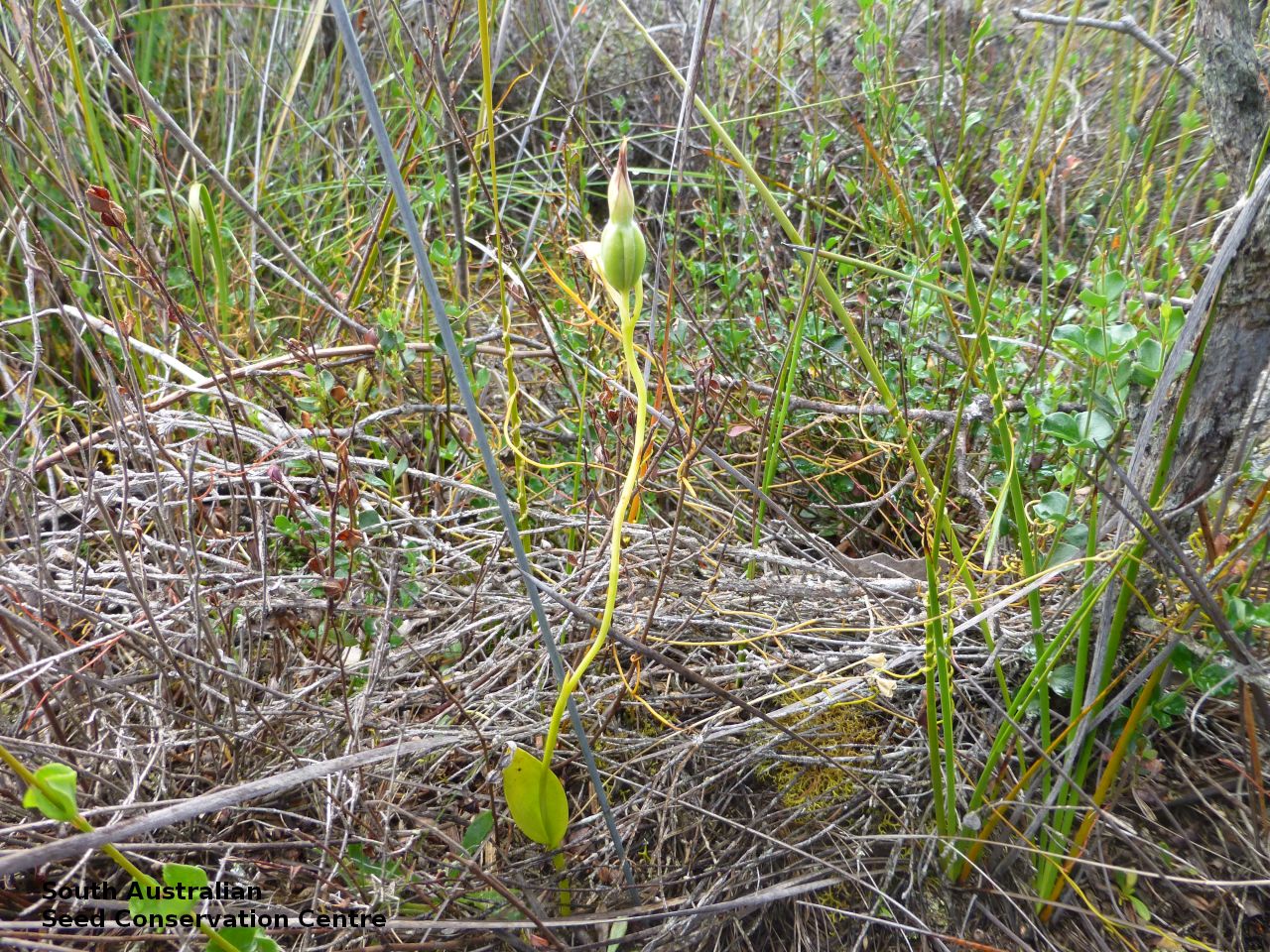


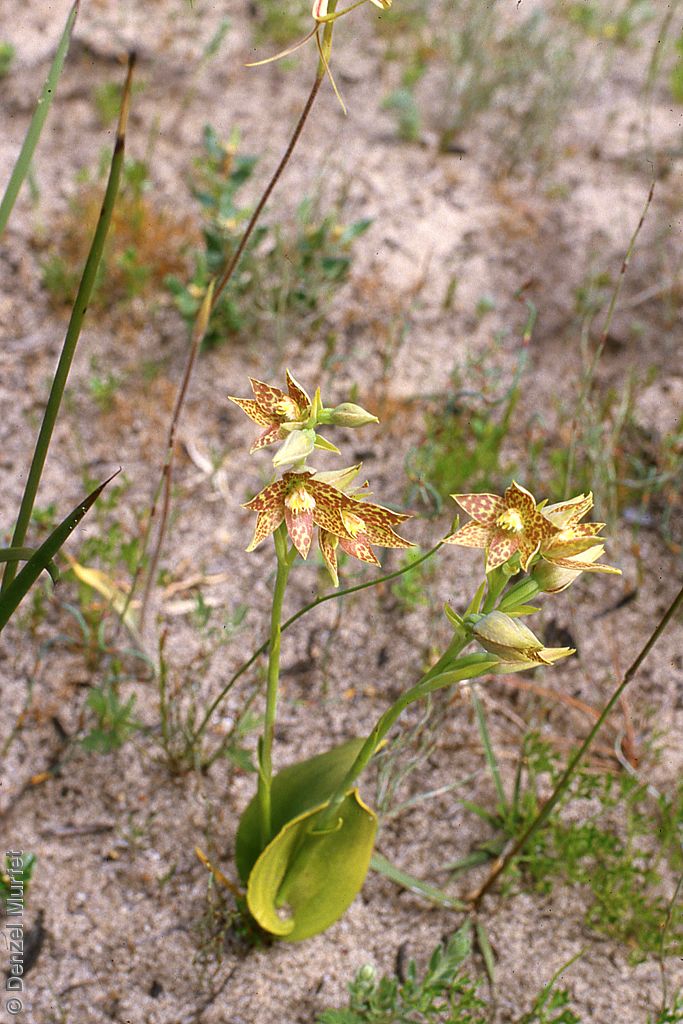





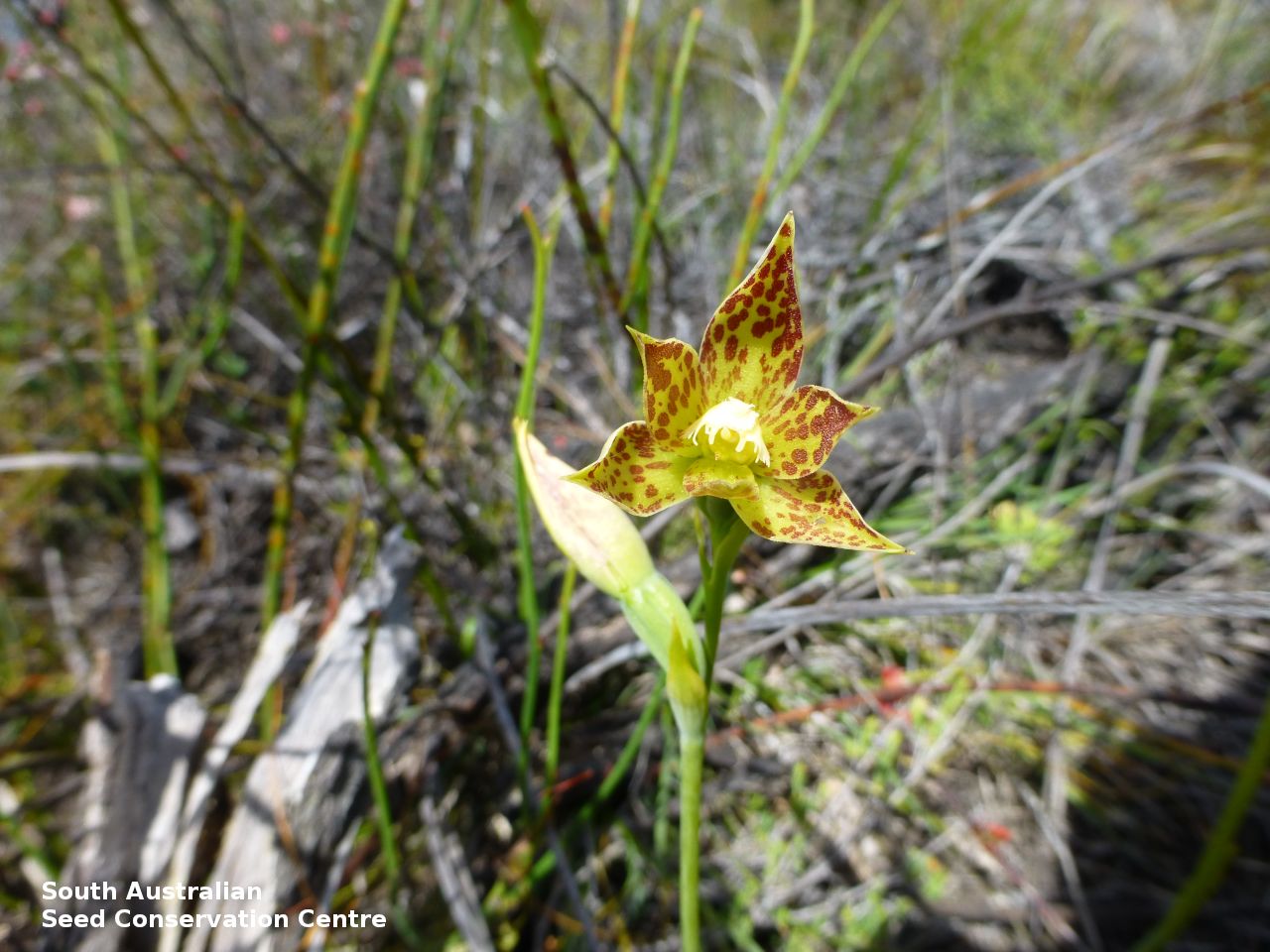
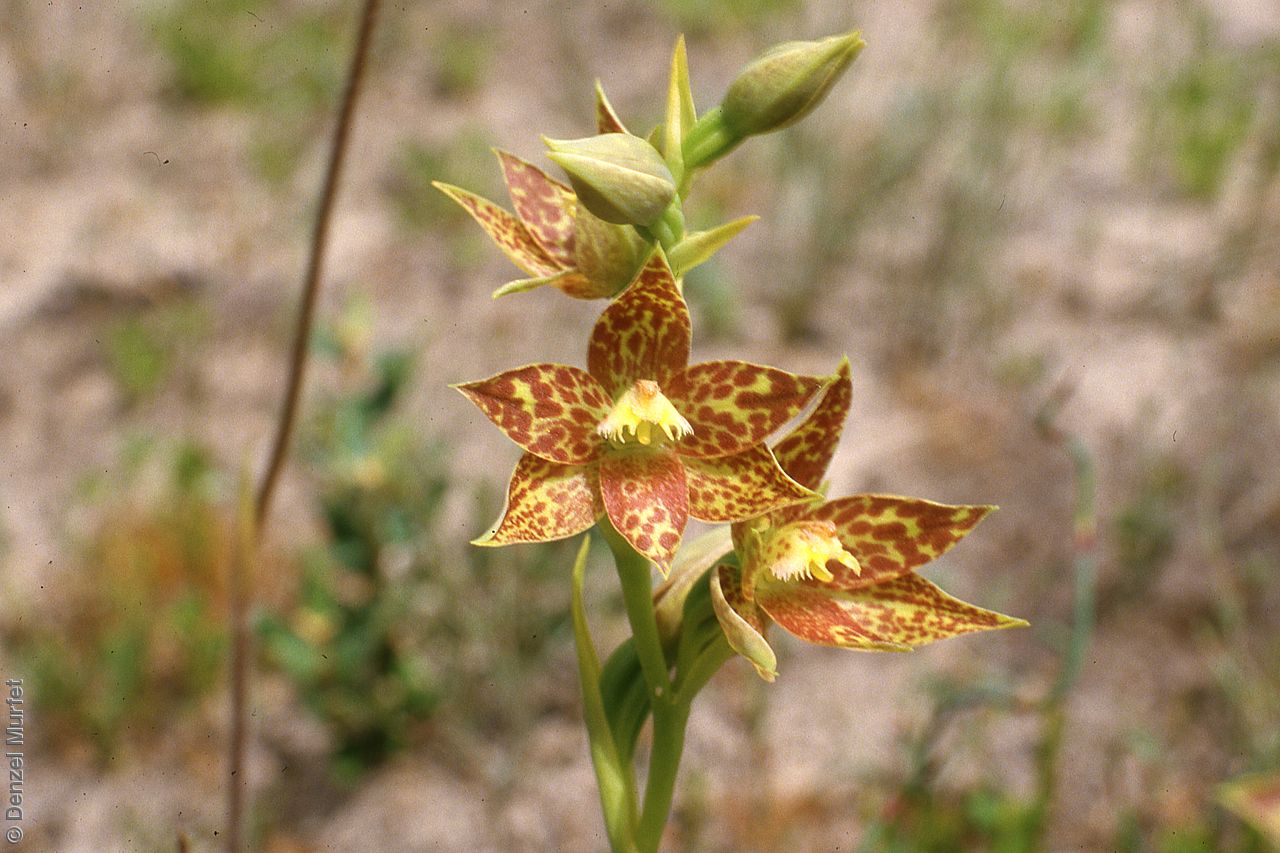




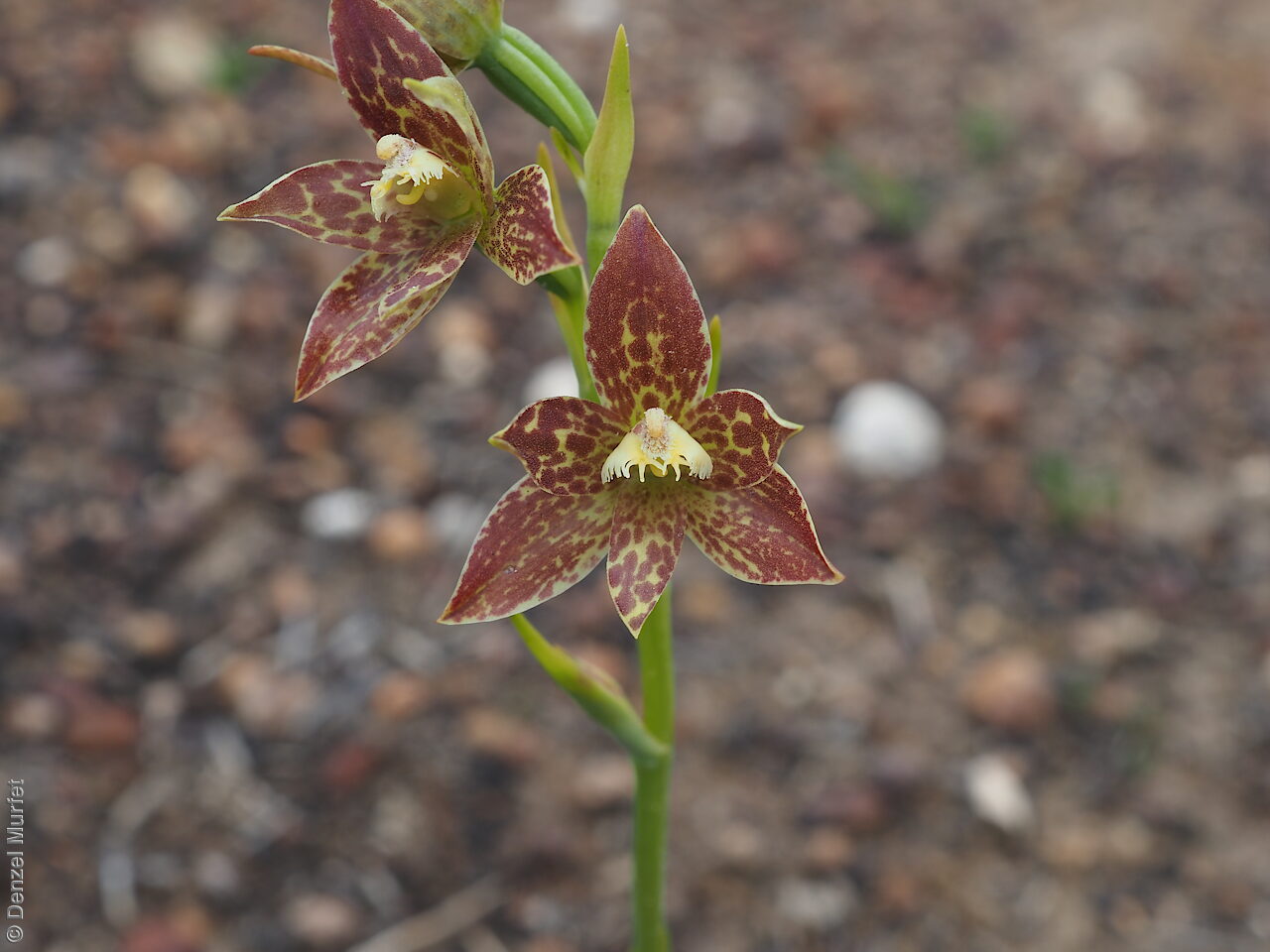

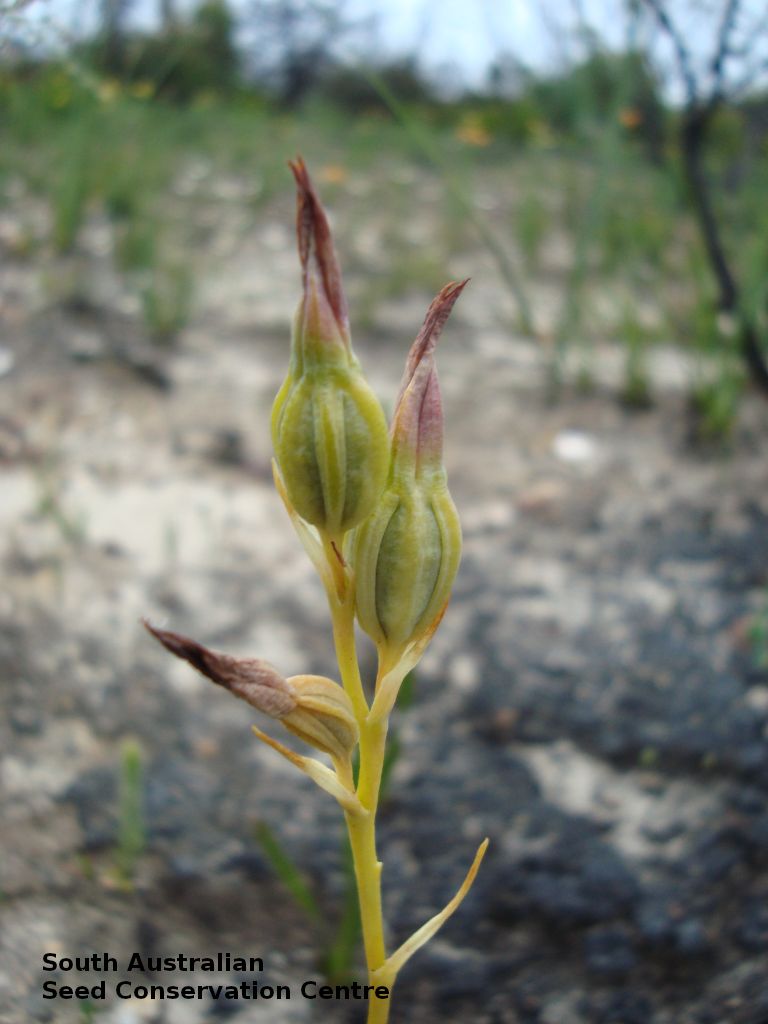


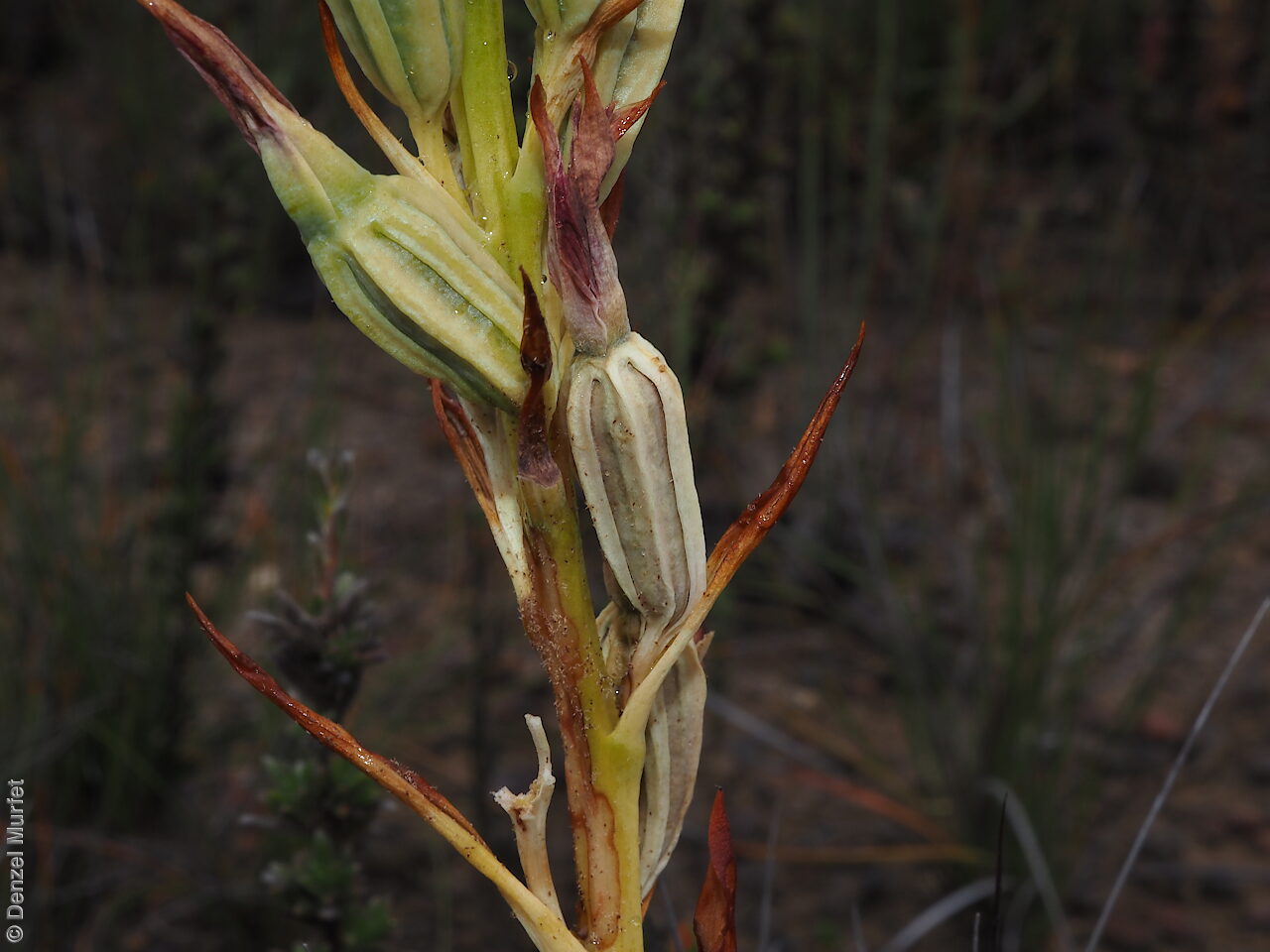


Botanical art
Prior names
Thelymitra fuscolutea
Common names
Blotched Sun-orchid
Leopard Sun-orchid
Etymology
Thelymitra from the Greek 'thelys' meaning a bishop and 'mitra' meaning headwear, hat, hence a bishopds mitre, referring to the sometimes plumed or decorated wings of the column, which is usually produced behind and over the anther in a hood like projection. Benthamiana named after the botanist and author George Bentham (1800-1884), an English botanist described as "the premier systematic botanist of the nineteenth century".
Distribution and status
Found on the Eyre and York Peninsulas, Kangaroo Island, southern Mount Lofty and the South-east in South Australia, grows in open forest, heathy forest and heathland in well drained sandy soil and clay loam. Also found in Western Australia, Victoria and Tasmania. Native. Uncommon in South Australia. Very rare in Tasmania. Rare in Victoria. Common in Western Australia.
Herbarium regions: Eyre Peninsula, Yorke Peninsula, Southern Lofty, Kangaroo Island, South Eastern, Green Adelaide
NRM regions: Adelaide and Mount Lofty Ranges, Eyre Peninsula, Kangaroo Island, Northern and Yorke, South East
AVH map: SA distribution map (external link)
Plant description
Terrestrial orchid growing to 50 cm tall with a single basal leaf, ovate, leathery and bright green, to 25 cm long and 55 mm wide. Inflorescence a long stalk with 1-15 yellow or yellow-green with dark brown or red-brown spots or blotches flowers up to 40 mm in diameter. Column is yellow and has deeply toothed wings. Flowering between October and December. Fruits are brown papery ellipsoid capsule. Seeds are very small dark brown ellipsoid seed with an ovoid translucent brown mesh-like covering
Seed collection and propagation
Collect seeds during December. Collect fat capsules as they start to dry and turn brown. Pods will split and release the seeds quickly and will require monitoring. To increase the chances of collecting mature pods, it is recommended that a small breathable bag (ie. Organza bags) be used to enclose the developing capsules. Place the capsules in a container that will hold fine seeds and leave to dry for a few weeks or until the capsule split. Then carefully hold the capsule and tap it gently to release the seeds. Store the seeds with a desiccant such as dried silica beads or dry rice, in an air tight container in a cool and dry place, refrigerator or in liquid nitrogen. For the NVC South East Orchid Project one population consisting of more than 4 individuals was recorded from Big Heath Conservation Park. Approximately 270,000 seeds (0.12 g) were banked from this population. Seed viability was 92%. Seed germination in Thelymitra species is difficult in the absence of symbiotic mycorrhizal fungi.
| Location | No. of seeds (weight grams) | Number of plants | Date collected | Collection number Collection location | Date stored | % Viability | Storage temperature |
|---|---|---|---|---|---|---|---|
| BGA | 270,000 (0.219 g) | 5 | 11-Dec-2013 | DJD2808 South Eastern | 1-Nov-2016 | 92% | -80°C |
| BGA | 102,000 (0.08 g) | 3 | 14-Nov-2019 | Goondooloo, Deep Creek CP Southern Lofty | 24-Jun-2020 | N/C | -18°C |
| BGA | 141,000 (0.110 g) | 10 | 23-Dec-2021 | D.A.Young (Vivonne Bay) Kangaroo Island | 10-Aug-2022 | N/C | -18°C, -80°C |
| BGA | 170,000 (0.133 g) | 6 | 30-Oct-2022 | Messent CP South Eastern | 21-Jun-2023 | N/C | -18°C, -80°C |
Number of plants: This is the number of plants from which the seeds were collected.
Collection location: The Herbarium of South Australia's region name.
% Viability: Percentage of filled healthy seeds determined by a cut test or x-ray.